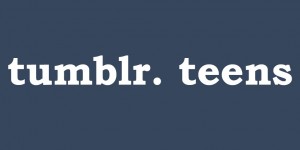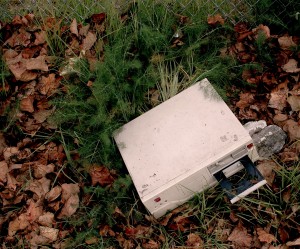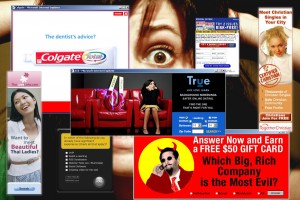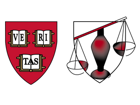Posts filed under 'radioberkman'
 Listen: or download | …also in Ogg
Listen: or download | …also in Ogg
Even before Election Day, 2016, observers of technology & journalism were delivering warnings about the spread of fake news. Headlines like “Pope Francis Shocks World, Endorses Donald Trump For President” and “Donald Trump Protestor Speaks Out, Was Paid $3500 To Protest” would pop up, seemingly out of nowhere, and spread like wildfire.
Both of those headlines, and hundreds more like them, racked up millions of views and shares on social networks, gaining enough traction to earn mentions in the mainstream press. Fact checkers only had to dig one layer deeper to find that the original publishers of these stories were entirely fake, clickbait news sites, making up false sources, quotes, and images, often impersonating legitimate news outlets, like ABC, and taking home thousands of dollars a month in ad revenue. But by that time, the damage of fake news was done – the story of the $3500 protestor already calcified in the minds of the casual news observer as fact.
It turns out that it’s not enough to expect your average person to be able to tell the difference between news that is true and news that seems true. Unlike the food companies who create the products on our grocery shelves, news media are not required by law to be licensed, inspected, or bear a label of ingredients and nutrition facts, not that they should or could be.
But the gatekeepers of news media that we encounter in the digital age – the social media platforms like Facebook and Twitter, search engines like Google, and content hosts like YouTube – could and should be pitching in to help news consumers navigate the polluted sea of content they interact with on a daily basis.
That’s according to Berkman Klein Center co-founder Jonathan Zittrain and Zeynep Tufekci, a techno-sociologist who researches the intersection of politics, news, and the internet. They joined us recently to discuss the phenomenon of fake news and what platforms can do to stop it.
Facebook and Google have recently instituted to processes to remove fake news sites from their ad networks. And since this interview Facebook has also announced options allowing users to flag fake news, and a partnership with the factchecking website Snopes to offer a layer of verification on questionable sites.
Reference Section
Zeynep Tufekci, “Mark Zuckerberg is in Denial”
Jonathan Zittrain’s Tweetstorm on Fake News
CC-licensed content this week:
Neurowaxx: “Pop Circus”
Photo by Flickr user gazeronly
Tweet us!
Subscribe to us on Soundcloud
iTunes
or RSS
December 15th, 2016
 Listen: or download | …also in Ogg
Listen: or download | …also in Ogg
The effects of surveillance on human behavior have long been discussed and documented in the real world. That nervous feeling you get when you notice a police officer or a security camera? The one that forces you to straighten up and be on your best behavior, even if you’re doing nothing wrong? It’s quite common.
The sense of being monitored can cause you to quit engaging in activities that are perfectly legal, even desirable, too. It’s a kind of “chilling effect.” And it turns out it even happens online.
Researcher Jon Penney wanted to know how the feeling of being watched or judged online might affect Internet users’ behavior. Does knowledge of the NSA’s surveillance programs affect whether people feel comfortable looking at articles on terrorism? Do threats of copyright law retaliation make people less likely to publish blog posts?
Penney’s research showed that, yes, the chilling effect has hit the web. On today’s podcast we talk about how he did his research, and why chilling effects are problematic for free speech and civil society.
Reference Section
Watch Jon Penney’s recent talk and read a recap
Follow Penney on Twitter
Creative Commons photo via Flickr user fotograzio
Tweet us! Subscribe to us on Soundcloud, iTunes, or RSS.
May 18th, 2016
 Listen:or download | …also in Ogg
Listen:or download | …also in Ogg
“George Lucas built a whole new industry with Star Wars.” says Peter S. Menell, devoted science fiction fan and a professor at the UC Berkeley School of Law, who studies copyright and intellectual property law. “But what funds that remarkable company is their ways of using copyright.”
And he’s right. A third of the profits LucasFilm pulls in from Star Wars has come from merchandising alone. Not ticket sales, not DVDs, not video games or books. Toys, clothes, and weird tie-ins like tauntaun sleeping bags and wookie hair conditioner.
But fans of Star Wars, and other stratospherically profitable creative universes, increasingly like to become creators within those universes. They write books, they make costumes, they direct spinoffs and upload them to YouTube.
And sometimes they make money.
How does law come into play when fans start to reinterpret intellectual property? We sat down with Menell to see where the tensions lie between the law, the courts, and the George Lucases of the world.
Reference Section
Creative Commons music used in this episode:
David Szesztay “Morning One”
Broke For Free “Something Elated”
Image courtesy of Flickr user: kalexanderson
Tweet us! Subscribe to us on Soundcloud, iTunes, or RSS.
May 2nd, 2016
 Listen:or download | …also in Ogg
Listen:or download | …also in Ogg
In her article “The Secret Lives of Tumblr Teens,” Elspeth Reeve tells the stories of some of Tumblr’s most popular bloggers — kids who started their blogs in high school, made a ton of money, and then inexplicably disappeared.
In this episode we talk to Reeve about what she discovered when she went looking for these teens and what that can tell you about Tumblr and the teenage child stars of the Internet.
Reference Section
Read Reeve’s article
Produced by
Daniel Dennis Jones and Elizabeth Gillis
Music by
Dave Depper (“Rare Groove,” “Sharpie,” “Heartstrings”), Podington Bear (“Golden Hour”) and Anitek (“Beta Blocker”)
Tweet us! Subscribe to us on Soundcloud, iTunes, or RSS.
March 10th, 2016
 Listen:or download | …also in Ogg
Listen:or download | …also in Ogg
An artist, musician, or writer can’t just take another person’s creation and claim it as their own. Federal law outlines how creators can and can’t borrow from each other. These rules are collectively called “copyright law,” and essentially they give creators the exclusive right to copy, modify, distribute, perform, and display their creative works.
But even with copyright there are exceptions, or times where another creator can use a copyrighted work without getting the copyright holder’s permission. This safe zone is called “Fair Use.”
For Fair Use Week this year, Radio Berkman’s Daniel Dennis Jones talked to Leo Angelakos and Olga Slobodyanyuk from the Cyberlaw Clinic at the Berkman Center for Internet and Society about what constitutes fair use.
Transcript
Daniel Dennis Jones: It’s time to learn everything you need to know about the history of Fair Use, in six minutes or less. I’m Daniel Dennis Jones, and this is Radio Berkman. Let’s start the clock!
This is “Pretty Woman,” co-written by singer Roy Orbison and released in 1964. The copyright belongs to Orbison’s publisher, Acuff-Rose Music. Fast forward 25 years. It’s 1989 and the rap group 2 Live Crew releases “Pretty Woman” on their album, “As Clean as They Wanna Be.”Shortly thereafter, Acuff-Rose sues 2 Live Crew’s label for copyright infringement.
Basically, Acuff-Rose says, hey, this song isn’t yours. According to the Copyright Act of 1976, this song is ours. You want to play it? You have to pay us.
Leo Angelakos: Copyright law gives creators — such as authors and artists — the exclusive right to copy, modify, distribute, perform, and display their creative works.
DDJ: Copyright law was originally created as an incentive for artists and creators. If creators aren’t worrying about whether someone might steal their work, they’re more likely to share their ideas with the public. This kind of sharing in turn helps to create more ideas, as well as products and jobs and art and whole industries, all that good stuff.
In the Pretty Woman case the publisher, Acuff-Rose, owned the copyright and therefore had the sole right to copy, modify, and distribute that song.
But this is where things get really interesting. This case made it all the way to the Supreme Court. In the end 2 Live Crew won. They were allowed to do their own spin on the song, without paying and without permission from Acuff-Rose, and here’s why.
2 Live Crew’s defense was that their version of Pretty Woman was a parody of the original. For that reason they argued it fell into this safe zone under copyright law called fair use.
Olga Slobodyanyuk: Fair use is a defense to copyright infringement. Fair use let’s you use someone’s copyrighted work without permission as long as you do it in a way that adds new meaning to the work.
LA: The Supreme Court found 2 Live Crew’s version to be a parody and it was thus a fair use because it ridiculed the innocent nature and outdated troupes of the original song.
DDJ: And they say that what makes this court opinion so interesting is there is actually no explicit mention of parody in copyright law.
Taking inspiration from a precedent set by a 19th century court case, Congress decided to build Fair Use into copyright law in 1976, realizing that it helped fulfill the law’s original purpose of incentivizing creators.
LA: And fair use is actually a really flexible doctrine. It can cover a wide-range of works. Olga: It’s central to fulfilling the constitutional purpose and it balances the public’s first amendment rights against monopolies granted by copyright.
DDJ: A monopoly in this sense is the fact that one person – or one band, or one copyright owner – has complete and total control over a piece of content, and everything that gets done with it – recording, performing, translating, remixing, adapting, modifying, you name it.
There are a number of examples where the use of a copyrighted work is important to furthering some other goal. It could be an artistic use. It could be in journalism, or for some kind of educational use. When judges and lawyers are considering whether something is fair use, they look at 4 factors.
LA: First the purpose and character of the use.
OS: Courts have construed this to mean that a fair use is one that transforms the copyrighted work to add new expression, meaning or message.
For example, a student can quote a stanza of a poem in an essay where it’s critiquing the poem because that critique of the poem will make the use transformative.
DDJ: Transformative. That’s the key word. Are you using a portion of the copyrighted work in a context that makes a new statement? If so, that might be Fair Use. A good example of the transformative factor occurred in a court case where documentary filmmakers used a John Lennon song paired with images of the Cold War to suggest that Lennon’s message was naive.
OS: The court found that this use was transformative because the filmmakers criticized Lennon’s lyrics in a way that added new meaning to them.
LA: The second factor asks how expressive the genre of the work is and whether it’s published or not.
DDJ: If a creator hasn’t published the work yet, it is more strongly protected by copyright, because they should have control over when it first goes public.
OS: The third factor asks how much of the original work was taken. This inquiry includes both a qualitative and a quantitative component. For example, the less words you take, the more likely it is to be a fair use.
DDJ: So if you’re literally copying someone’s entire book and republishing it, you’re probably not going to get away with calling it fair use. But if you’re quoting a small passage, you probably will.
LA: And the fourth factor asks whether the use would replace the demand for the original work in the marketplace. So for example, if someone publishes a glossary that defines terms from the Harry Potter series, such a glossary could usurp the demand for a similar glossary by J.K. Rowling and courts might not find that to be a fair use.
DDJ: In other words, if people are consuming the thing you created as a substitute for something created by the original creator, you’re walking on thin ice. This fourth factor of fair use also plays a role in that Supreme Court case we mentioned earlier.
Two years before the case went to the Supreme Court, a federal appeals court ruled that 2 Live Crew had a “blatantly commercial purpose” in recording its version. In other words the demand for the the parody replaced that of the original work, and that should deprive the 2 Live Crew song of all protection under the copyright law. But the Supreme Court said no to the lower court’s decision, which validated parodies under fair use, even when someone makes money off of them, as a creative work deserving of consideration.
And that’s everything you need to know about Fair Use in 6 minutes or less! Celebrate Fair Use by going to fairuseweek.org where you can find infographics, videos, and all kinds of resources about fair use.
Reference Section
Photo courtesy of Fair Use/Fair Dealing Week
Music courtesy of “Beta Blocker” -Anitek
This week’s episode was written by Leo Angelakos, Elizabeth Gillis, Daniel Dennis Jones, and Olga Slobodyanyuk, and edited by Elizabeth Gillis.
Visit http://www.fairuseweek.org for even more information and resources on Fair Use
Visit http://dlrp.berkman.harvard.edu/ for information on how to incorporate digital resources and fair use friendly practices in classrooms
Special thanks this week to Andres Lombana-Bermudez of the Youth & Media Team, and Chris Bavitz of the Cyberlaw Clinic.
Tweet us! Subscribe to us on Soundcloud, iTunes, or RSS.
February 25th, 2016
 Listen:or download | …also in Ogg
Listen:or download | …also in Ogg
Are you really “you” online?
We asked around for stories of digital alter egos — secret identities that people maintain on the web and try to keep separate from their real life identities.
And it turns out there are lots of reasons — some good, some nefarious, some maybe both — for someone to have alternate personas online.
On this episode we share stories of Catfishers, sock puppets, and digital doppelgangers.
Reference Section
Photo courtesy of carbonnyc
Music courtesy of Podington Bear, MCJackinthebox, Blue Dot Sessions, and David Szesztay
This episode featured Sara M. Watson, Jonmy Sun, and Vivek Krishnamurthy
Tweet us! Subscribe to us on Soundcloud, iTunes, or RSS.
This week’s episode produced by Daniel Dennis Jones and Elizabeth Gillis, with oversight from Gretchen Weber, and extra help from Adam Holland, Tiffany Lin, Rebekah Heacock Jones, Annie Pruitt, and Carey Andersen.
February 9th, 2016
 Listen:or download | …also in Ogg
Listen:or download | …also in Ogg
You’ve likely heard of Silk Road – the black market e-commerce hub that was shutdown in 2013 for becoming a magnet for vendors of illicit goods. But the story of its shutdown, and the investigation and trial that followed, is complicated enough that we need a guide.
On this week’s podcast Berkman Affiliate Hasit Shah brought together members of the Berkman community to speak with journalist and legal expert Sarah Jeong about what it was like to follow the Silk Road trial, and how the justice system copes when technology becomes a central part of a case.
****
Listeners: We need your stories! Was there ever a time you used the web to be anonymous? Have you ever had a digital alter ego? If you’ve ever used a blog or a social media account to do something you didn’t want connected to your real identity, we want to hear about it! We’ve set up a special hotline. All you have to do is call-in and tell your story on our voicemail, and we’ll feature you on an upcoming episode. (617) 682-0376.
Reference Section
More about Sarah Jeong
Follow Sarah Jeong’s coverage of Silk Road and more at Forbes
Find out more about Hasit Shah
Tweet us! Subscribe to us on Soundcloud, iTunes, or RSS.
This week’s episode produced by Hasit Shah with Daniel Dennis Jones.
November 20th, 2015
 Listen:or download | …also in Ogg
Listen:or download | …also in Ogg
On your computer, you don’t ever really “take out the trash.” Data doesn’t get picked up by a garbage truck. It doesn’t decompose in a landfill.
It just accumulates.
And because space is becoming less and less of an issue — hard drive space keeps getting cheaper, and a lot of the apps we use have cloud storage anyway — deleting our files is a thing of the past.
We become Digital Hoarders.
But what happens when we dig up those old files from years ago? Those old emails from our boyfriend or girlfriend, those old digital photos of family, those long rambling journal entries?
On this week’s podcast we talk to three researchers who all have different stories of digital hoarding, deleting, and recovering.
Jack Cushman, Judith Donath, and Viktor Mayer-Schönberger talk about the value of remembering, the value of forgetting, and what we trust to our machines.
Reference Section
A portion of this episode appeared on WGBH’s Innovation Hub
How are people using social media to remember and forget?
On the Snapchat Boom and the rise of anonymous messaging
Photo courtesy of memestate
Music courtesy of Podington Bear
Tweet us! Subscribe to us on Soundcloud, iTunes, or RSS.
This week’s episode produced by Elizabeth Gillis with Daniel Dennis Jones, and Mary Dooe and Kara Miller from WGBH’s Innovation Hub.
November 6th, 2015

Listen:or download | …also in Ogg
Facebook has had a lot of trouble with misogynistic speech. A few years ago, several women’s groups joined together to petition Facebook to work harder to block misogynistic pages, posts, and replies. At the time Facebook had strict standards against hate speech that was racist or anti-semitic — such speech would be blocked or take down. These groups simply asked that gendered hate speech receive the same treatment.
It was ironic, people said, that Facebook would commonly take down photos of women breastfeeding in response to complaints. Such content was deemed pornographic. But when Facebook users complained about comments that were misogynistic or harassing women, Facebook defended their decisions not to take them down. Their reasoning was one of semantics: Comments that described gendered violence didn’t actually threaten violence, they would argue. But — campaigners pointed out — misogynistic content actually is threatening, and creates an unsafe environment for speech.
The campaigners won. But this isn’t the first time Facebook’s policies on censorship have been questioned by the public. And it won’t be the last.
Right now, many European countries are asking Facebook to more strictly police hate speech on the platform.
Jillian York is a writer and the director for International Freedom of Expression at the Electronic Frontier Foundation. She joined us to talk about the most recent debates about online speech, and why she questions whether these kinds of decisions should be left up to Facebook at all.
Reference Section
Jillian’s recent post “On Facebook’s Ideology”
Photo courtesy of zubrow
Music courtesy of
Tweet us! Subscribe to us on Soundcloud, iTunes, or RSS.
This week’s episode produced by Elizabeth Gillis and Daniel Dennis Jones.
October 30th, 2015
 Listen:or download | …also in Ogg
Listen:or download | …also in Ogg
A recent New York Times survey of the top 50 news sites showed that blocking ads while surfing their mobile news sites could save up to 14 megabytes per page loaded. 14 megabytes adds up to 30 seconds over 4G, and, if you’re on a restricted data plan, it would cost you 30 cents per page, all of that money going to your mobile provider, not to the content publisher.
But for content publishers, and the ad providers that keep them alive, ad blocking poses a huge problem. Most of the commercial web as we know it exists because of advertising. When web users aren’t loading ads on their favorite ad-supported site, or otherwise paying the site – by subscribing, sponsoring, buying merchandise – the site is losing out on cash.
And we’re talking serious cash. Digital ad spending is expected to reach $170.17 billion in 2015, with $69 billion – 40% of ad spending – in the mobile space.
That’s a lot of money to spend on ads that might not even be seen. Ad block software is now in use by 200 million people around the globe.
Doc Searls is a journalist and author who worked in the ad industry years ago. He has referred to ad blocking as “the biggest boycott in human history.”
Radio Berkman producer Elizabeth Gillis spoke with Searls about what’s going on in the Ad Block Wars, and the part played by users, like you.
Reference Section
Doc’s Ad Block Wars series
Photo courtesy of Flickr user piratechikan
Creative commons music from Neurowaxx and Podington Bear
Tweet us! Subscribe to us on Soundcloud, iTunes, or RSS.
This week’s episode produced by Elizabeth Gillis and Daniel Dennis Jones.
October 22nd, 2015
Previous Posts
 Listen: or download | …also in Ogg
Listen: or download | …also in Ogg Listen:
Listen:  Listen:
Listen: Listen:
Listen: Listen:
Listen: Listen:
Listen:
 Listen:
Listen:


